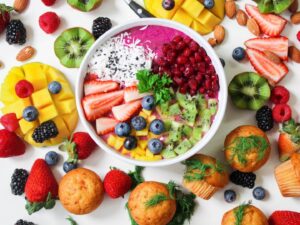
Picture this: You made dinner and your child is refusing to come to the table. Or, you thought you’d be adventurous and try a new meal, and your child is crying, possibly gagging, and maybe even throwing the food off the table. Or, you are making the same meal every night for your child: chicken nuggets, or a PB and J, or macaroni and cheese (elbow noodles only or there will be yelling) because that is all they will eat. This plays out time and time again. You, as parents/caregivers, are tired. You know nutrition is important, but you also know your child needs to eat. Please take a breath, and know you are not alone.
When it comes to eating, each person is unique in their tastes and preferences; however, how do we know when a child’s preferences and refusal to eat certain foods is more than a stage?
A common misconception is that eating is an easy thing we simply do; however, eating is actually a learned skill and quite complex. At birth, infants have reflexes (root, suck, swallow) to eat; however, by 6 months of age, these reflexes disappear and eating becomes self-driven. If mealtime interactions are negative at any point in a child’s development, this may impact the typical progression of feeding skills. Negative mealtime experiences may include: external meal-time trauma (e.g. force-feeding, or other abuse), internal difficulty during meals (e.g. structural deficits, chronic reflux, gagging, choking, trouble swallowing, constipation), unidentified allergy/sensitivities, oral-motor weakness (impacting coordination of tongue, jaws, teeth), and sensory processing disorder (can impact acceptance and management of varieties of tastes, textures, and consistencies). In more complex cases, a variety of negative experiences may be interwoven and cyclically impacting a child’s eating (e.g. eating dairy with an unknown dairy allergy/sensitivity, which results in GI discomfort, reflux and/or constipation, causing discomfort now associated with eating and potential appetite suppression). Picky eating does not exist in a vacuum. All potential contributing factors must be considered for optimal treatment planning to meet the child’s whole body needs.
How do we identify if a child’s “picky eating” is more than “behavior” and requires further evaluation and support? The following red flags signal a need to meet with your child’s primary care provider (PCP) and discuss possibly acquiring a referral for a Speech or Occupational Therapy evaluation:
- Coughing, gagging, and/or choking during meals
- Difficulty chewing harder-texture foods (e.g. meats, raw vegetables, and raw fruits)
- Limited eating across food groups (e.g. only eating carbohydrate items or fruits, typically soft)
- Eating only specific foods prepared in a particular way (rigid food preferences)
- Weighing significantly less than other kids of same age/height (growth curve)
- Consistently refusing to eat and/or sit at the table to eat
These red flags can lead to stress on the whole family at mealtime, which can lead to further negative associations with eating. OT/ST intervention can be beneficial to support positive interactions with food, as well as develop the necessary oral-motor skills to manage more difficult food textures. Having positive associations with eating is an important foundation to successful expansion of any child’s variety of intake. Mealtimes, even snacks, can and should be fun, explorative, and engaging for kids. Another way to expand this engagement is to include your child in the cooking process, allowing them to see, feel, and taste ingredients as you cook. Including kids in this process creates great opportunities for teaching and empowering our kids to become food explorers, learning about the physical properties of each food, as well as how we can change them. If you own a blender or food processor, a great place to start is exploring with smoothies. We can add all kinds of ingredients to see how the flavors blend and change (and the color too!). Add a handful of fresh spinach for “green sprinkles,” or include a small roasted beet for a beautiful pink-red color. See a list of smoothie ideas below!
Not all “picky eating” requires intervention; however, if you identified your child with any of the red flags listed above, it is worth addressing with your child’s PCP. As stated, other issues may be occurring that require additional professional support beyond speech and occupational therapy, such as, but not limited to: allergist, dietician, GI specialist, ENT, and behavioral health therapy/counseling services. Our skilled therapists at NorthLakes Community Clinic love supporting our clients and families on their journey towards greater wellness. Please speak with your PCP for a referral and call our department with any questions regarding our feeding intervention programming.
Jennie Zelenak, MS, CCC-SLP is a Speech Language Pathologist and Therapies Director at NorthLakes Community Clinic. NLCC currently offers Pediatric Speech Therapy in Ashland.
Smoothie Exploration
One banana (ripe, or try frozen, creates milkshake texture!)
Favorite frozen berries
One Cup of Favorite Milk
Optional add-ins:
- Handful of fresh spinach leaves, washed
- Small roasted beet (¼ to ½ cup diced beet, can also use canned)
- Frozen mango (or any favorite frozen fruits!)
- Cinnamon
- Yogurt
- Cocoa powder
- Favorite nut butter (peanut, almond, cashew, sun, etc.)








